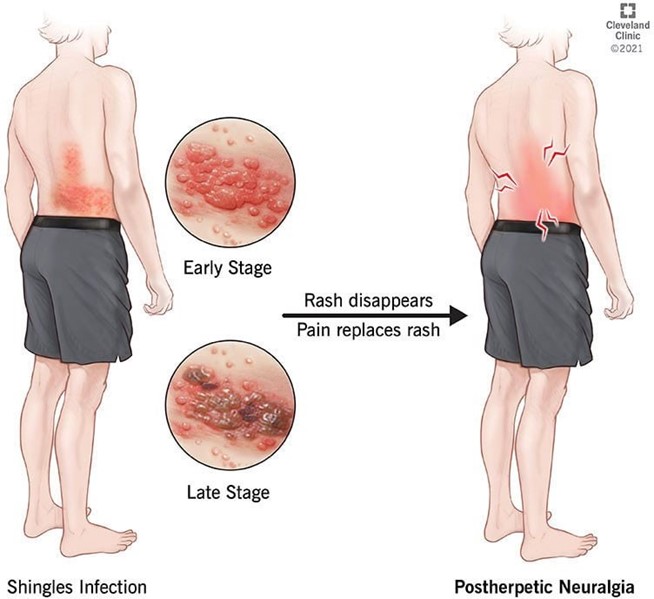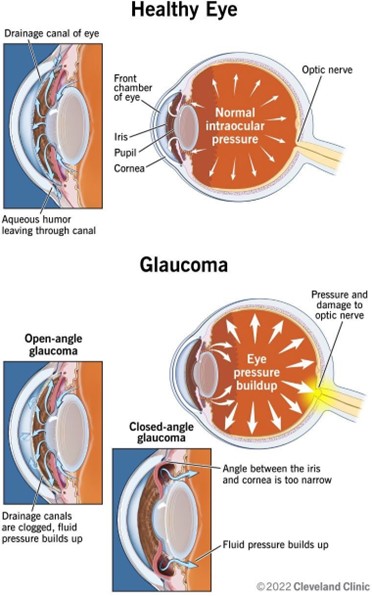The practical nurse (PN) is making a home visit to an older male adult who was recently diagnosed with Herpes zoster (shingles). The client reports the onset of severe burning pain along the right side of his trunk. What action should the PN take?
Administer a prescribed PRN dose of analgesic.
Obtain an oxygen tank for home administration.
Give the next prescribed dose of antiviral medication.
Notify the nursing supervisor of the uncontrolled pain.
The Correct Answer is A
This is the best action for the PN to take because it provides immediate relief for the client's pain, which can be severe and debilitating in Herpes zoster. The PN should also assess the client's pain level, location, and characteristics and document the response to the medication.

B. Obtaining an oxygen tank for home administration is not indicated for this client and does not address his pain issue. Herpes zoster does not affect the respiratory system and does not cause hypoxia or dyspnea.
C. Giving the next prescribed dose of antiviral medication is not a priority for this client and may not have an immediate effect on his pain. Antiviral medication can help reduce the duration and severity of Herpes zoster, but it does not provide analgesia.
D. Notifying the nursing supervisor of uncontrolled pain is not a priority for this client and may delay his pain relief. The PN should notify the nursing supervisor only if the prescribed analgesic is ineffective or causes adverse effects.
Nursing Test Bank
Naxlex Comprehensive Predictor Exams
Related Questions
Correct Answer is A
Explanation
The correct answer is Choice A:
"Are you planning to obey the voices?.”. Choice A rationale:
The PN should ask the client if he plans to obey the voices because it helps assess the potential risk of harm to himself or others. If the client indicates an intention to follow the voices' commands to harm someone, it indicates a serious concern for safety and may require immediate intervention to protect the client and others.
Choice B rationale:
While asking if the client believes the voices are real is important for understanding the client's perception of the situation, it may not immediately address the risk of harm that the client or others might be facing.
Choice C rationale:
Asking if the client has taken any hallucinogens is relevant to explore possible substance- induced psychosis, but this question should be asked later in the assessment process. The priority is to assess immediate safety concerns related to the client's compliance with the voices' instructions.
Choice D rationale:
Inquiring about when the voices began is important, but it is not the most urgent question in this situation. Although the onset of the symptoms is relevant, addressing the potential for harmful actions should be prioritized.
Correct Answer is A
Explanation
Glaucoma is a group of eye diseases that damage the optic nerve and cause vision loss. It is often associated with increased intraocular pressure, which can compress the nerve fibers and reduce blood flow to the retina. The most common type of glaucoma, open-angle glaucoma, causes gradual loss of peripheral vision.

The other options are not correct because:
A. Macular edema is a condition that causes swelling and fluid accumulation in the macula, the central part of the retina that is responsible for sharp and detailed vision. It can cause blurred or distorted vision, but it does not affect the optic nerve or the peripheral vision.
B. Cataract is a condition that causes clouding of the lens, which is the transparent structure that focuses light onto the retina. It can cause blurred, dim, or yellowed vision, but it does not affect the optic nerve or the intraocular pressure.
C. Diabetic retinopathy is a complication of diabetes that damages the blood vessels in the retina and causes bleeding, leakage, or scarring. It can cause blurred, fluctuating, or darkened vision, but it does not affect the optic nerve or the intraocular pressure.
Whether you are a student looking to ace your exams or a practicing nurse seeking to enhance your expertise , our nursing education contents will empower you with the confidence and competence to make a difference in the lives of patients and become a respected leader in the healthcare field.
Visit Naxlex, invest in your future and unlock endless possibilities with our unparalleled nursing education contents today
Report Wrong Answer on the Current Question
Do you disagree with the answer? If yes, what is your expected answer? Explain.
Kindly be descriptive with the issue you are facing.
